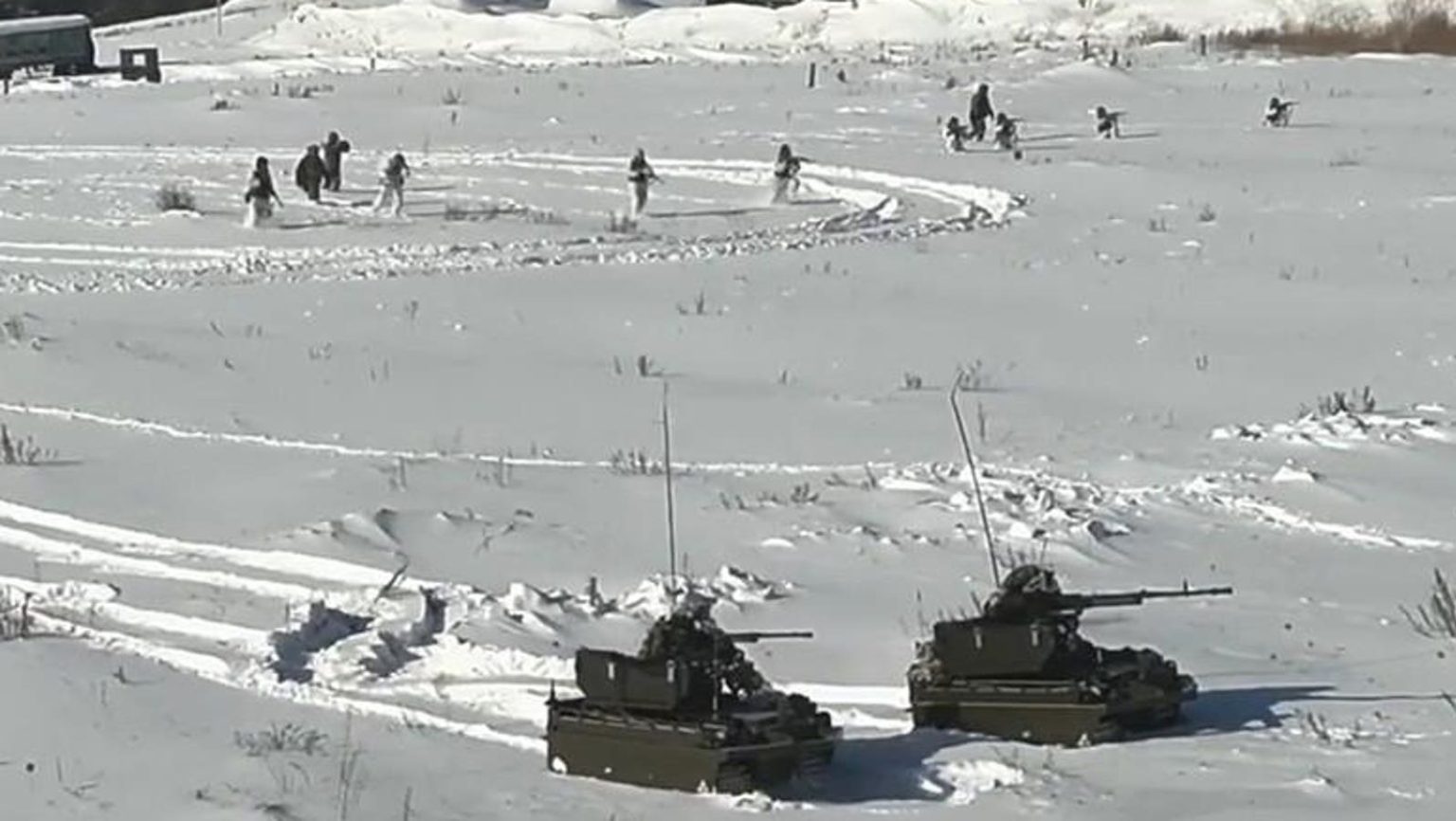During the 2014 invasion of Crimea, Russia pioneered new tactics using unmanned aerial vehicles to support their offensive maneuvers. In the ongoing war with Ukraine, Russia has continued to develop innovative applications for unmanned systems. A recent social media video shows how Russia plans to integrate the Courier unmanned ground vehicle (UGV) into its current operations. The video features a technical demonstration where the UGV operates alongside a squad of soldiers performing a movement to contact. This demonstration highlights the evolving role of unmanned systems in a conflict increasingly shaped by technological advancements.
The Courier UGV, developed as part of a volunteer effort, is an inexpensive, versatile platform about the size of an all-terrain vehicle. It features a tracked chassis propelled by 6 kW electric motors to reach a top speed of 35 km/hr. The vehicle reportedly has an advanced navigation suite that enables both autonomous operations and remote control. Each Courier UGV can carry a substantial payload, which is customizable based on the mission.
With its large payload capacity, it can support a wide range of operations, including logistics, medical evacuation, and combat roles. In March 2024, a group of Courier UGVs equipped with AGS-17 automatic grenade launchers participated in a mechanized assault near Berdychi, southeast of Avdiivka. In October 2024, Russian forces received a new batch of Courier UGVs, which have since been used in various combat operations. A video released at the time of this deployment show Courier UGVs outfitted with remote weapon platforms and mine-laying capabilities.
The recent social media video highlights a new combat role for the Courier UGV. The video shows two Courier UGVs advancing through a snowy landscape, each armed with a 12.7 mm machine gun and fitted with extra armor plates to protect their tracks. The UGVs navigate the deep snow, although they get stuck and adjust their course multiple times. As they move forward, they trigger a roadside bomb that explodes in close proximity to the UGVs, neither of which are damaged by the blast. The Courier UGVs appear to be clearing the path for a BMP-1 carrying a squad of soldiers, who proceed to dismount from the vehicle. The UGVs then provide cover fire as the soldiers move into position. The soldiers and UGVs then alternate providing cover fire while bounding forward. Russian forces have been increasingly using dismounted assaults, similar to the one seen in the video, to push Ukrainian forces from their defensive positions in urban areas.
The video highlights several key developments in the Russia-Ukraine conflict. This tactic likely stems from Russia’s current shortage in infantry fighting vehicles, which would typically be used to provide fire support in operations like the one shown in the video. The Courier UGV, being less complex than conventional armored vehicles, are quicker and less resource-intensive to produce. Their compact design is also better suited for the urban battlefield where the tight spaces and narrow streets limit the maneuverability of larger vehicles. Further, their smaller profile makes them more challenging targets, especially for artillery.
In addition to a shortage of armored fighting vehicles, Russia has sustained heavy casualties. The video highlights Russia’s use of unmanned systems to compensate for its personnel shortages. In the second half of the video, the two Courier UGVs are effectively performing the mission of another squad of dismounted soldiers, providing cover fire and bounding forward. The coordination between the Courier UGVs and the dismounted soldiers demonstrates how the UGVs can serve as both combatants and support elements, reducing risks to human personnel. With mounting casualties and recruitment challenges, Russia may increasingly turn to robotic systems to fill gaps in its forces and sustain operations on the battlefield.
As Russian forces adopt these tactics, Ukraine will naturally develop its own technologies and strategies to counter them. In particular, Ukraine will likely leverage its expertise in electronic warfare to disrupt the Courier UGV’s remote-control systems. In response, Russia may enhance the UGVs’ autonomy to reduce their reliance on remote signals. Ukraine is also likely to use drones to target the UGVs, prompting Russia to integrate counter-drone capabilities. The Courier UGV could potentially be equipped with its own electronic warfare systems to disrupt incoming drones and use its machine gun to kinetically engage them.
A defining characteristic of the Russia-Ukraine War has been the rapid development and deployment of new technologies by both sides to address battlefield challenges. Russia appears to be addressing its growing shortages of personnel and armored vehicles by deploying the Courier UGV to fill these roles. If Ukraine fails to counter these systems effectively, Russia will likely expand their use across a range of operations, potentially transforming the dynamics of the conflict.
Read the full article here





